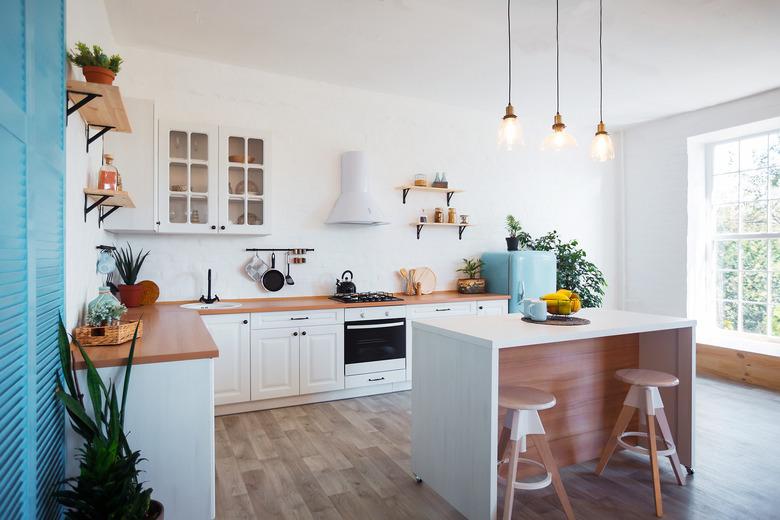What Is The Difference Between Bisque And Biscuit Color In Major Appliances?
When designing your kitchen, there are many stylistic elements you may wish to consider. Alongside having a kitchen that's functional and pleasant to be in, you'll likely also want to make sure it's visually and aesthetically appealing to you. Choosing your color palette is a key element to this.
Many opt for a neutral palette in our appliances to allow other color choices to shine. But even if that is the case, you'll need to pay careful attention to different neutral tones. The difference between bisque and biscuit shades, for instance, can be quite distinct — and getting it wrong can cause problems in your kitchen's final look.
Choosing Appliance Colors
As Warners' Stellian says, appliances are a big investment and shouldn't be bought without careful consideration. While it's obviously essential to make sure you're getting the appliance with the best features and correct size for your needs, appliance color should not be overlooked. Alongside choosing the best color, you'll also want to think about different types of finish, as they can make a big difference too.
Appliance colors seem to follow trends. Brighter shades like turquoise or avocado were big in the past, but now seem extremely retro and are rare to find. The trend now tends to be more neutral tones, but even they can be something of a minefield. And one of the biggest issues you might face is looking at the difference between bisque and biscuit kitchen appliances.
Differences Between Bisque and Biscuit
Rather than opting for a stark white, many prefer to go with a softer neutral tone when it comes to our kitchen appliances. Both bisque and biscuit shades fit into this category. Despite their rather similar names, bisque and biscuit are not interchangeable shades in terms of kitchen appliances.
According to Certified-Parts, bisque most commonly refers to a pale, neutral, off-white color. To an untrained eye, it could even be referred to as a white shade. Biscuit is quite different and refers to a much darker, beige-like tone. It can lean slightly tan or even look like a pale warm gray.
Bisque vs. Biscuit
A large amount of the difference between bisque and biscuit comes down to personal preference. If you want a warmer, tan feel to your kitchen, biscuit is the way to go, whereas if you want something more neutral and lighter, bisque may be your better option. In recent years, both bisque and biscuit tones have gone out of style, according to Goedekers. This can make it difficult to find matching replacement parts down the line — although, as they state, trends tend to be cyclical, and there's every chance bisque and biscuit tones could make a comeback!
One essential thing, though, is making sure you get all of your appliances in the same shade. Mismatched bisque and biscuit shades can make a kitchen look messy and thrown together. Luckily, there is still a wide range of bisque and biscuit appliances out there, available from stores like Best Buy and Home Depot. You can clearly see the difference between bisque and biscuit within their appliance ranges.
